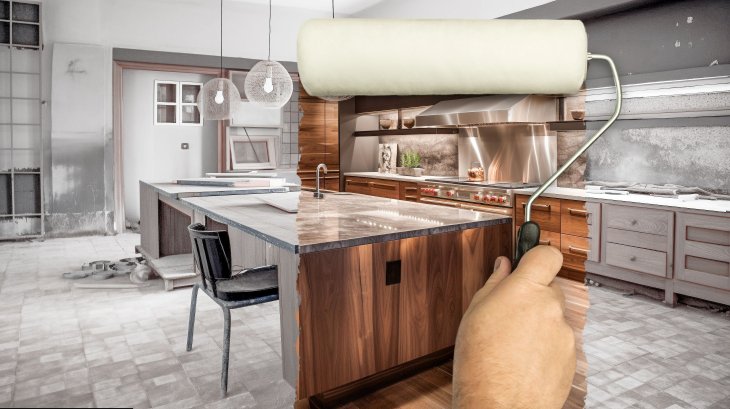The automotive industry has seen steady growth in the past few years. This has also translated into the rising demand for auto mechanics across the globe.
But as an auto repair shop owner or manager, you need to know exactly how to motivate and retain your auto mechanics. Motivated auto mechanics mean better customer service and eventually, higher profits.
And do you know what really motivates auto mechanics? A results-oriented and fair pay system that rewards them for their hard work.
In this post, we will be going over the two different payment systems for auto mechanics along with their advantages and disadvantages,
How Do Mechanics Get Paid?
So this brings us to the elephant in the room, how do mechanics really get paid? How does one use the different pay systems to calculate fair rates for auto mechanics?
Payment systems in the auto repair industry are complex and require more thought than just using a minimum wage to pay technicians.
There are two main payment systems that are widely used across the industry.
The first one is the flat rate pay system and the second one is the hourly rate system for auto mechanics.
In the auto industry, there is still an ongoing debate on which pay system works better for auto mechanics, the flat rate system or the hourly pay system?
To answer this question, we will need to understand both pay systems in detail, along with the pros and cons of each one. Remember, which system works best for which automotive business also depends on how the business functions and what its goals are.
What is The Hourly Pay Rate System For Mechanics?
As the name suggests, the hourly pay system depends on the number of hours worked by mechanics in an independent shop. The hourly rate of the mechanic is simply multiplied by the number of hours worked by the mechanics.
For example, if the hourly rate pay of a mechanic is $20 and he works for 40 hours for a week, his total pay is going to be 20*4 = $80 for the week.
What is the Flat Rate Pay System For Mechanics?
As opposed to the hourly rate pay system, in the flat rate pay, mechanics get paid depending on the nature of the job that they are completing. Each task or job has a flat rate that is charged.
This is calculated by the employer or shop owner by estimating the number of hours it will take for flat rate workers to complete that job. Let’s say in a flat rate shop, the flat rate for a particular task is based on two hours’ worth of time.
Now even if the mechanic works for one hour or more than two hours, as per the flat rate system he will be paid for two hours of time.
The flat rate system is also sometimes called ‘book time’. This means that flat rates are already based on booked time and this time is dependent on a number of factors.
Some of the factors for calculating flat rates include:
- The average amount of time it takes to complete the job
- The average amount of time it takes to complete similar jobs
- How long a manufacturer says the warranty of a job could take
- The industry standards in the repair of auto tech space that experts look at to calculate flat rate pay
The flat rate pay system is actually more common in the automotive repair industry. You will notice that shop owners and managers usually charge flat rates for the services, as opposed to an hourly rate.
Understanding The Benefits of Hourly Pay Rate
The Advantages of Hourly Pay Rate
The biggest advantage of the hourly pay rate system is that it is easy to understand and quite predictable. As a shop owner or a manager, you know exactly how much you need to pay the mechanic by the clock.
The same goes for auto mechanics. Mechanics know exactly how much money they will be making, based on their hourly rate and the number of hours they have put in per week.
Secondly, hourly rates can come in handy for the auto repair industry, given the unpredictable nature of jobs. It is quite possible that upon further diagnosis, a mechanic discovers that repair and maintenance are going to take longer than usual. After all, the situation or condition of each car is going to be different.
The hourly rate pay, in such a situation, would ensure that the mechanic gets a fair amount. If a job that was initially estimated to take one-hour spans over three hours, then the shops pay for three hours, as per the hourly rate system.
Another benefit of the hourly rate is that it is thought to increase the quality of work. Technicians can take any amount of time they need to conduct thorough car repair, without being worried about not being for the complete duration of their work. In such a case if the workers won’t be compensated for their extra time, it can lead to decrease in the quality of work as they would rush against the clock.
So if you are a shop owner who likes to work methodically, then hourly rate systems would suit you better than flat rate systems. This also holds true for you if you are running an auto repair shop that likes to and specializes in conducting complex repairs.
However, most auto repair shops that hire mechanics would like to combine hourly rates with rewards for above-average productivity and quality. Through such a system, while the technicians have an expectation for a minimum amount they will be receiving, you’ll be able to motivate them for better quality work.
The Disadvantages of Hourly Pay Rate
While the hourly rate might seem attractive and predictable, there are a few down sides to it as well.
The hourly pay system does not account for efficiency. If you are a highly skilled technician with experience under your belt and complete your job quickly, you will still be paid the same rates as other technicians. This means that the amount of money you can make under this system is the same, despite your growing experience and skill level.
The hourly rate system can also lead to a decline in efficiency. For example, if a technician knows that he will be paid for a task more only if he spends more time on it, he might reduce his efficiency levels. Technicians might start spending two hours on a task that requires one hour, just to make more from it.
Hence, if not monitored properly, this system could backfire.
Understanding The Flat Rate System
Advantages of the Flat Rate System
The flat rate pay system is deemed to be a great fit for technicians and repair workers who are efficient and productive. Owing to higher levels of productivity, flat rate workers can take on more work as it comes.
Flat rate workers might be working for only 40 hours a week but will be compensated double or even triple, in flat rate shops. If you are experienced, skilled and efficient, you have the potential to make a lot of money under the flat rate system.
The flat rate pay system is also useful for employers and auto shop owners. Through a flat rate pay system, technicians are motivated to be more productive and take on more jobs, which means more sales revenue for shops and businesses.
Another advantage for flat rate shops of this system is that they don’t have to overpay slower or inefficient mechanics, an issue that occurs in most shops with an hourly pay system.
The flat rate system can also be used by shops to estimate the amount of income they can make in a month, based on the estimated flat rate for vehicle repairs.
Flat rate technicians are also more productive in the sense that they don’t waste time just to make more money through an hourly pay system and remain focused on the tasks at hand. Shop owners don’t have to pay for hours that are wasted on stuff like socializing and the pay period is only restricted to the period of repair.
Another advantage of the flat rate system is that it increases the motivation of technicians and workers to upsell and bring in more technical work, with higher flat rates. This is a win-win for both, technicians and shop owners as it means more compensation for the workers and more revenue for the shop.
The Disadvantages of Flat Rate Pay System
The flat rate system can also result in lower income for technicians if shops are not bringing in jobs. The flat rate process is unpredictable and a lower number of job alerts for a shop would mean lesser money for technicians, even though they are spending time at work.
Another disadvantage of the flat rate for technicians is that sometimes, complex repairs or tasks may take much more time than estimated in the flat rate. This means the flat rate workers will not be compensated for the extra hours that they are putting in.
This can also lead to lower levels of motivation. But to counteract such issues, some shop owners offer a base salary or even minimum wage, to cancel out the impact of this unpredictability.
A flat rate can also lead to sloppier jobs at independent shops. Since technicians are not paid by the hour, they will be in a rush to get the job since they know they will receive the flat rate in any case.
The flat rate also does not account for differences in skill level, experience and certifications of technicians. For a technician who has extensive experience, the value of a flat rate may be lower than what they might earn through hourly pay.
Lastly, the biggest downside of a flat rate is that the estimated value of this rate is determined by manufacturers and can be lower than the actual value of the job.
Do Flat Rate Workers Get Paid for Non-Repair Work?
Technicians working under a flat rate may also perform other tasks, in addition to repair and maintenance like cleaning. Usually, the compensation for such tasks is accounted for mutually, by the employer and employee.
The employment policy for flat rate technicians outlines how they will be paid for additional tasks.
Can Flat Rate Employees Earn Overtime?
According to the U.S. Department of Labor, employees covered by the Fair Labor Standards Act are entitled to receive over time pay, through a mutual agreement between the employer and employee, when the employee works for more than 40 hours a week.
However, it is recommended that technicians and employees discuss the policy for over time pay with their employers beforehand.





















